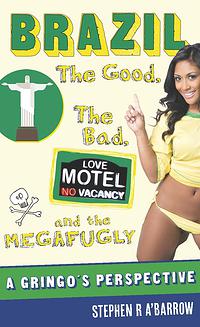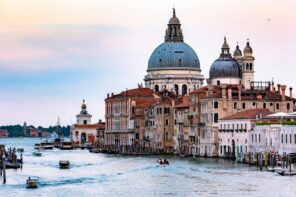
Image provided by Stephen R A’Barrow
Buy Now
Stars: ***
Pages: 283
First published in 2014 by The Book Guild Ltd
My intrigued piqued when I read that this book was aimed specifically towards a male audience – yes, at first glance the front cover is most definitely gender-bias; not only with the half-dressed female adorning the cover but the typography tends to lend itself more towards the lad-lit market as well. However, I did have to question whether an entire book really could isolate the whole female population.
Stephen R A’Barrow is a Gringo, an English speaking individual, who has decided to relocate to Brazil, quite an exotic contrast for an English boy. Having spent many years travelling there for business one would hope that he has learnt a thing or two from his experiences. Add to this the newly developed knowledge of his adopted home and you would have to assume that he is quite the travel expert.
Split into four main sections, this book highlights the good, the bad and the ‘megafugly’ before introducing you to his personal travelogue – a list of recommendations for certain areas around Brazil and the neighbouring countries. In my opinion, this format worked quite well although as a reader it implied that you had the freedom to dip in and out of the chapters as you saw fit rather than reading it as a typical novel – in contrast however, this is not the case. I did read it from cover-to-cover simply because to understand both the author and his take on Brazil to read just one chapter in isolation would had led to a misrepresentation of both. So please, take my advice, this is not your usual travel guide – you will have to spend time reading this one to fully appreciate it.
In the opening chapters Barrow engages quickly with his target audience – sex, boob jobs, bikinis and beautiful ladies are all discussed at length. He does have a habit of going off on a tangent at times, elaborating in just a little bit too much detail for my liking the more promiscuous side of Brazil but when I remember his target audience I believe these opening chapters could be a real winner not only for Stephen’s book but also for certain elements of Brazilian tourism.
It is the cultural insights that have however, resonated with me. Learning about their marriage customs; how weddings are expected to be large affairs – apparently asking 120 guests to attend is classed as a tiny gathering. How becoming a parent for the first time is more of an extended family affair, with viewing galleries – can you even begin to imagine that? Finally, if you can afford the luxuries that come with a middle to upper-class lifestyle in Brazil there is an automatic, unsaid expectation that you will have maids, cooks, gardeners and nannies to help raise your children. Whilst the thought of never picking up a duster again holds a certain appeal, in practice I am not sure how comfortable I would feel about this. For anyone that has ever considered moving to Brazil and wanted to immerse themselves fully into local life I wonder how many have researched these aspects?
Within his opening section Barrow also shares a couple of gems, anyone visiting the country should not miss. At the very top of his list, or I am assuming so as it is mentioned on frequent occasions throughout the book, is the Estrada Real (the Royal Road). Start in Paraty, a colonial town, about four hours from Rio and then drive along the coastal road enjoying the freedom that it offers.
“The Estrada Real boasts magnificent colonial towns to match those you can find in the old world. The most popular stop off points along this trail include Tiradentes…Sᾶo Joᾶo Del Rei… But the main stop-off point…is the UNESCO city of Ouro Preto (Black Gold)…” (Pages 62-64)
Apparently this route is still virtually untouched by tourism so if you are after a taste of traditional Brazil this could be worth considering, alongside of course, visiting during Carnival season. One tip worth noting, if you arrive in Rio during the Carnival don’t even attempt to head up to the Corcovado (The Christ the Redeemer statue) because you will spend all your day in queues – wait until the city quietens down. Also, if you thought that attending a Carnival would make for an exciting, cheap day out you need to read chapter 11 – the eye-watering prices listed may make you quickly change your mind.
This book, whilst helping to promote the best that Brazil has to offer, also looks at the perpetual underachievement of such a large country. Read this and you will further appreciate what dire living conditions many face and how their quality of life is severely hampered. If you don’t already, after this you will accept that for many football is more important than education – with only one of their universities featuring in the top 235 across the world and you will be made acutely aware of Brazil’s past liberal attitude towards slavery. It all makes for very interesting reading.
For me, the most valuable part of this book comes towards the end where Barrow starts to make his own recommendations of places to visit, where to stay and what cuisines to try. For example when in Rio whilst a trip to the beach will feature highly on everyone’s list make sure to also include a trip to Rio Scenarium where you can enjoy some of the best live music in Rio whilst practicing your Latin moves on the dance floor.
I have already mentioned a road trip along the Estrada Real but if you enjoy reading you may tie in a break in Paraty with the annual international literary festival or visit during high tide when the streets flood if you enjoy capturing towns in unusual, unique ways.
Fancy a trip somewhere exotic? Then the island of Fernando do Noronha could be the answer. Barrow describes it as Brazil’s answer to the Galapagos but with fewer tourists.
One final consideration should also be made for the Búzios Peninsula, which Barrow considers to be rather over-developed but typically Brazilian and a Carioca favourite.
Further afield, Barrow’s also takes the time to share his favourite memories of Peru. In particular mentioning that should you travel across the border you really must try a Pisco Sour or an Algarrobina; both drinks that have become famously associated with the region. He also goes on to share his experiences of Lima, Cusco and Machu Picchu.
Is this a book that everyone will appreciate? I am not sure. The opening chapters may discourage some from reading through until the end however, if you can move past the excessive desire to mention anything sexual you will be pleasantly surprised. The insightful travelogue towards the end of the book is especially noteworthy; with top tips of where to stay, eat and drink along with the occasional suggestion of where to go dancing – these suggestions would be well worth researching further before any trip.
Stephen comes across as an astute individual who has composed a book which is both perceptive and light-hearted in places. Readers, take note – read it the manner in which it has been written; it is both frank and entertaining – if you remember this you will enjoy it.
Disclaimer: The link to the book in this post is an affiliate link. That means that if you were to purchase a book by using it we would earn a small commission at no extra cost to you. Income earned this way is used to keep Travelling Book Junkie up and running.




